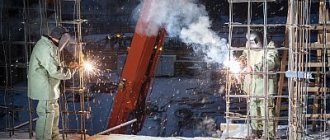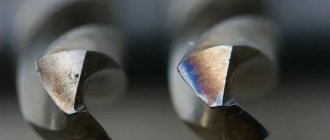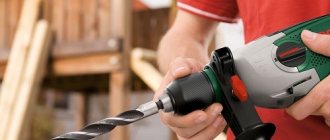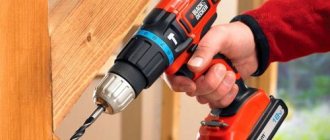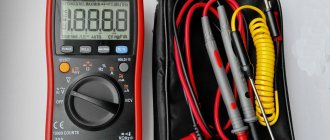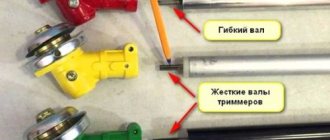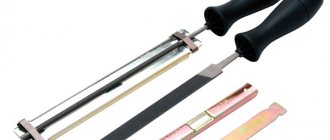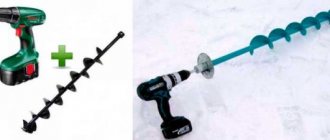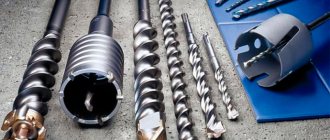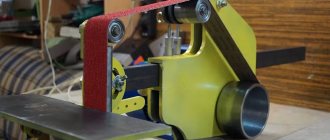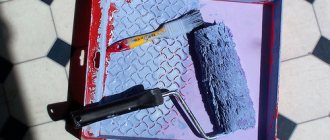Core drills used for machining metal products are also known as annular cutters. Using this effective tool, you can create holes of large diameter and significant depth in metal in literally a matter of seconds.
For manual work with core drills, a specialized tool with a QuickIN Plus clamp is required
The operating principle of such drills is based on the core milling method, which requires significantly less energy – 4–12 times less than when using a conventional tool. In this regard, to effectively use core drills, including through holes, you can use equipment with a low-power drive.
Advantages of core drills
Core drills for metal, when compared with conventional ones, have a number of advantages.
- The design of annular cutters for metal work is designed in such a way that the hole is cut along its contour, which does not require equipment with a high-power drive.
- By drilling with an annular cutter, you can obtain holes with high internal surface roughness. This cannot always be achieved when using a classically designed tool.
- Core drills are installed on various types of equipment. In particular, they are used not only on drilling machines, but also on milling and turning machines.
- Drills of this type can be used in conjunction with other tools, that is, they can be used to perform multi-tool processing.
- The area of contact between the cutting edges of the core drill and the workpiece is quite significant.
- In one pass, a core drill allows you to remove a large amount of material being processed.
- In order to process the metal being processed into chips, significantly less energy and power of the equipment used is required.
- Due to the fact that annular cutters are made of high-speed steel, drilling with their help is performed with high productivity.
- The drilling process is carried out not only at high speed, but also with exceptional precision.
- This type of tool is highly economical and ergonomic to use.
- Annular cutters create a minimal amount of noise during processing.
- The high productivity of using such a tool is also ensured by the presence of a large number of cutting edges on its working part.
An annular drill allows you to produce through holes in metal products, the diameter of which is in the range of 12–150 mm.
Metal crown: tips for proper use
Almost all new instruments have an attractive appearance. On the pages of online stores you can find a meaningful description of the product, sometimes even supported by positive customer reviews. In order not to be disappointed with the purchase, you need to seriously study the capabilities of the tool. You can evaluate core drills for metal in the following order.
The centering drill must be included with the crowns
- You need to make the right choice; to do this, you should carefully read the labeling information. The packaging must indicate the dimensions, country of origin (which to a certain extent indicates the quality of the product), material of manufacture, features of accessories and devices. If the marking does not provide complete information about the annular cutter, there is reason to doubt the quality of the tool.
- During use, do not neglect the manufacturers' recommendations. Using the crown for purposes other than intended will result in damage to the instrument.
- If the kit does not include a centering drill, it must be purchased taking into account certain requirements. For example, the drill bit of a drill attachment must be cross-sharpened, otherwise instantaneous and accurate centering will not be possible.
- The need to regulate the number of revolutions was discussed more than once in the article. It should be emphasized that this condition is perhaps the most important for increasing the service life of metal crowns.
With the correct selection and use of crowns, a hole in metal can be made in a matter of seconds. The tool is applicable for various household and industrial purposes. Compliance with technical requirements can extend the service life for a long time. Conversely, one thoughtless use can cause defects that will make the crown unsuitable for use.
How to choose the right tool
Core cutters are presented on the modern market in two main categories:
- made of high-speed steel;
- with hard alloy teeth soldered onto the working part.
Types of Core Drills
One of the main criteria that you should focus on when choosing such a tool is the diameter of the hole being made. Inexpensive high-speed steel drills, characterized by higher elasticity, are used for drilling holes with a diameter of 30–35 mm in products made of steel alloys that do not have very high strength. Due to the peculiarities of their design, the cutting teeth of such annular drills or metal cutters are less susceptible to breakage.
For drilling holes whose diameter exceeds 35 mm, as well as for processing high-strength steel products, a tool is used, the cutting part of which is equipped with carbide brazing. If we compare such a carbide bit for metal with tools made from high-speed steels, it surpasses them due to a significantly longer working life.
The ultra-hard cutters of tipped crowns can withstand much greater loads compared to all-metal tools.
The most important criteria when choosing ring cutters for metal are the geometric parameters of the workpiece, as well as the characteristics of the material from which it is made. So, to create holes in products of different thicknesses, as well as those made of different metals, you should choose tools of different types.
Tips for choosing
Features of using hammer paint on metal
You should select an annular drill, first of all, according to the parameters of the hole you need to get in the metal
Moreover, you need to pay attention not only to the diameter, but also to the length of the drill. The most common crowns are 35 and 55 millimeters long for hole diameters up to 100 millimeters
Therefore, if you need to drill a hole longer than 35 millimeters, you will have to purchase a crown with a length of at least 55 millimeters.
To process high-alloy, high-strength steels, you should choose a drill bit with carbide cutting steel, since a high-speed steel tool will not always be able to cope with such material and may break. You should also pay attention to the drill shank, which must match the chuck or spindle of the unit on which you are going to work.
Types of annular cutters
There is a wide variety of annular cutters for metal on the modern market, which can be divided into the following categories:
- core drills, designed for equipping magnetic drilling machines and characterized by the highest strength;
- metal cutters made of high-speed steel that do not have any additional coating on the cutting part (some of their models, characterized by increased resistance to wear and impact loads, are made from special grades of steel containing up to 5% cobalt);
- metal carbide crowns, which can have a different number of soldered cutting teeth made of carbide.
Core drills with pusher
Whatever category core drills fall into, they are all produced with standardized shanks, which allows them to be used in conjunction with almost any equipment.
Design and characteristics of core drills
Despite the features of individual models, the basic designs of all metal crowns are approximately the same. All of them consist of a shank, a guide part with spiral grooves and a cutting crown consisting of an even number of teeth (see figure below).
The guide part of such a tool is hollow. When drilling, a metal core is advanced into its internal space, which is knocked out with a special pusher at the end of the operation. The central channel runs through the entire body. A pusher pointed at the end (often spring-loaded) is inserted into it, which, in addition to pushing out the metal core, serves to center the bit on the metal before drilling begins. Also, a centering drill can be attached along the axis of the central channel. In addition, on some models, coolant is supplied to the central channel through a side valve. Due to the large number of cutting teeth, a core drill requires significant cutting force to operate. Therefore, such tools, as a rule, have shanks with flats or grooves for reliable fixation in the chuck. Metal bits designed for conventional drills have a small diameter and cylindrical shanks.
Cutting part
The cutting part of the metal bits consists of an even number of teeth, evenly distributed along the working end of the body. Since this tool is designed for making an annular groove, all its teeth have three cutting edges: one frontal and two lateral (see photo below). For this feature, metal crowns are sometimes called annular cutters, since this cutting method is characteristic not of a drilling tool, but of a milling tool. The number of cutting teeth directly depends on the diameter of the core drill. Small and medium-sized instruments most often have four to six.
Types of shanks
To date, three types of shanks have become the de facto standard for crowns intended for drilling metal (see figure below):
- WELDON. The most common type of shank. It is a short cylinder with a diameter of 19 or 32 mm with three flats. Chucks with WELDON standard sockets can only accept this type of shank.
- UNIVERSAL (other names ONE-TOUCH and NITTO). In accordance with its name, it is a universal shank and can be mounted both in WELDON chucks and in a number of chucks from other manufacturers, except for QUICK –IN standard equipment.
- QUICK –IN. Fit standard of the well-known power tool manufacturer FEIN. Compatible only with devices from this company.
In addition, many manufacturers offer a wide selection of adapters and extensions to accommodate different standards, as well as adapter mandrels for different spindle tapers.
Design features and main parameters
A core drill for metal is a rather complex structure consisting of the following elements:
- directly to the working crown itself;
- pilot drill;
- shank;
- connecting screws.
Core drill device
To assemble such elements into a single structure, a pilot drill is inserted into a metal shank and connected to it with screws. Then a pilot drill with a shank is installed in the crown and the resulting structure is also fixed with screws. The cutting elements of such drills are teeth made of hard alloy, located on the working part of the tool with an uneven pitch.
Certain modifications of core drills come with a pusher that performs several important functions
The presence of carbide teeth on the cutting part, the hardness of which reaches 68 units on the HRC scale, provides such a drilling tool with the highest wear resistance and long service life. To facilitate the processing process performed with core drills, as well as to prevent overheating of their cutting part, coolant is used during the drilling process, which is supplied through the outer grooves of the tool.
The use of carbide bits for metal work makes it possible to obtain holes in the diameter range of 12–150 mm and with a depth of 35–50 mm.
Carbide drill bits for cutting holes in sheet material (short type). Supplied complete with center drill, shank and ejector spring
Universal mobile installation: magnetic drilling machine
A magnetic drilling machine is one of those devices that, despite their simple design, are highly efficient and cost-effective. Compared to a stationary drilling rig, it has a number of advantages:
- has no restrictions on the placement of holes;
- lightweight, mobile;
- inexpensive.
Magnetic drilling machines are designed for drilling, milling and threading in metal workpieces.
On a stationary machine, it is possible to make only small holes, since the distance between the crown and the working surface does not allow placing large workpieces. The magnetic device can be fixed to any metal plane using a special sole.
Such machines have different functional purposes. Using a 32 mm metal crown (and bits of smaller diameters) you can make a hole in thin material. Circular cutters from 50 to 150 mm with a reinforced design are used for thicker metal materials.
Wood crown: sizes and types of attachments, application features
Wood crown. Device and principle of operation. Types of hole saws. Features of operation of nozzles of various diameters. Bosh crowns, “Bison”, “Enkor”.
The magnetic part of the machines is quite powerful, it reaches 26 kN. This allows you to install the tool not only horizontally, but also at an angle, even vertically. If the surface is not level enough, the magnetic field does not reach the required value, additional clamps are used to secure the machine.
Magnetic drilling machines are more often used to make holes in large structures, so metal crowns of 50 mm or more are the most common attachments for such devices.
The machines are equipped with electric and pneumatic drives
A proven, reliable tool: Bosch metal drill bits
One of the most popular are Bosch metal crowns. Most of the products produced by this company are bimetallic, that is, made of two types of metal: the body is made of high-speed steel, and the teeth are soldered and have a slightly different composition, which includes cobalt.
The diameter of the nozzles is very different, but the step is equal to one inch: the minimum size is 9/16, that is, 14 mm, the maximum is 6, which corresponds to 152 mm. Some sizes may not be found in the Bosch crown line.
Bosch models have a standard fit of 1/2 or 5/8 inch, so the bits are compatible with many types of power tools. The Power Change adapter is used as an adapter. Replacing the annular cutter is not difficult and does not take long; to do this, remove the outer race - the adapter will push the crown out.
It is very important to maintain the required number of revolutions. A 29 mm nozzle requires a frequency of 400 rpm, and a 40 mm metal bit requires 200 rpm. These requirements significantly extend the service life of the nozzles.
Bosch crowns are made bimetallic, that is, made of two types of metal
As for the price of Bosch annular cutters for metal, it should be classified as moderate. A crown of medium diameter (38 mm) will cost about 800 rubles. Although the cost of individual products may exceed this figure. This company also offers sets of hole saws. A set of 11 bimetallic products costs an average of 8,000 rubles.
Metal crowns “Bison”: application features, prices
Metal crowns “Zubr” are domestic products. Although it should be noted that a significant part of them are made in China. Analyzing reviews on social networks, we can conclude that approximately 30% of users have complaints about the quality of the attachments. Nevertheless, the majority evaluates the tool as reliable and fully justifies the operational capabilities declared by the consumer.
The crowns are mostly bimetallic, with a wavy arrangement of teeth. The depth of the nozzles is standard – up to 40 mm. Size range of diameters – 14-152 mm. The drill bits from this manufacturer have side holes for chip removal, which makes the drilling process more comfortable. The holes after the “Bison” crowns are neat, with a smooth inner surface and smooth outer edges.
The attachments are inexpensive, the smallest (14 mm) will cost 150 rubles. The price of a 110 mm metal crown will average 800 rubles.
The holes after the “Bison” crowns are neat, with a smooth inner surface
Important! The service life of these crowns largely depends on the method of operation. From application experience (information taken from user reviews) it follows that you should not cut metal with a thickness of more than 2 mm with Zubr annular cutters, or it is necessary to use additional water cooling.
High-quality Chinese version: metal crowns Fit
Fit crowns are made in China. Canadian technologies are used during production. The company has many large branches on the Russian market. Like many other manufacturers of similar products, the main part of the crowns are bimetallic products.
Fit circular cutters can be classified into the middle price segment, which makes them quite popular. A 25 mm metal crown will cost 400 rubles, 30 mm – 500 rubles, 35 mm – 600 rubles.
Small and medium-sized bits have a triangular shank, each model is equipped with a centering drill. A distinctive feature of crowns from this manufacturer can be considered the absence of an external protective coating. This should in no way be regarded as a disadvantage. The chrome vanadium body does not need this addition. The absence of traces of damage to the coating, although it does not affect the result of the instrument, helps to preserve the aesthetics of the product. As a result, the process of working with a crown becomes more comfortable.
The ring bit for metal FIT is used for drilling holes in stainless steel
It should be noted that a metal thickness of 2 mm is not the limit for these nozzles. For example, with a 60 mm Fit metal bit you can drill a 3 mm sheet without harm to the cutting edge and without additional cooling. The shank of bits larger than 32 mm is hexagonal, which allows you to firmly secure the cutter body to the power tool.
Metal crowns "Anchor": sets and individual attachments
"Enkor" is a domestic trading and manufacturing company that has tens of thousands of different products, including metal crowns. It is worth noting that among the nozzles offered by this manufacturer there are both bimetallic models and simpler ones made of carbide material.
This choice allows buyers to find a suitable option in accordance with their financial capabilities. A 22 mm carbide metal bit will cost a little more than 100 rubles.
The dimensional parameters of Anchor nozzles can be considered standard: depth – up to 40 mm, diameter – from 14 to 152 mm. The crowns can come either complete with a holder and a centering drill, or separately - the main body with a cutting edge. The latter option is convenient for those who already have ring cutters of other sizes. The product is also suitable for cases where there is a need to replace the bit due to significant wear on the cutting edge.
Enkor nozzles are made from both bimetallic models and carbide material
Helpful advice! For more comfortable use, it is worth purchasing Anchor bits with a push-out spring, which does not allow the drilled fragment to get stuck in the bit body.
Crown sets from this manufacturer are also an available option. For example, a set of 9 attachments can be purchased for only 3,250 rubles. The minimum diameter of the crowns is 19 mm, the maximum is 64 mm. The set contains a key, two adapters and a centering drill. The small size of the transport case makes storing the tool convenient.
How are core drills marked?
By the markings, which are necessarily applied to the packaging of core drills, you can find out all their most important characteristics. Thus, the marking contains the following information:
- trademark or name of the manufacturing company;
- brand of material of manufacture or letter designation, by which you can determine that this is an annular drill for wood, metal or concrete;
- the basic geometric parameters of the drill, allowing you to determine the size of the hole made with its help.
In addition to the logo, the diameter and working length are applied directly to the core drill. The purpose and specifics of the nozzle are displayed on the packaging or in the accompanying documentation
Karnash brand tools
Today it is not difficult to choose and purchase core drills to solve any technological problem, since they are presented on the modern market with a wide variety of types and brands. These can be core drills for wood, as well as more durable and wear-resistant tools for concrete, cutters for making holes in metal products and structures.
Among specialists who often work with core drills, products manufactured under the Karnash brand are popular. The popularity of these core drills is facilitated not only by their exceptionally high quality, but also by the fact that they are available in a wide range, from which you can choose a tool to solve a specific task.
Karnash core drills
Thus, among the products manufactured under this brand, we can distinguish core drills of the following series:
- Gold-Line, made of high-speed steel HSS-XE, on the surface of which a wear-resistant coating is applied using Gold-Tech technology;
- Hard-Line, the cutting part of which is made of Swedish-made carbide inserts (the expanding spiral groove of core drills in this series simplifies the removal of chips from the processing zone);
- Rail-Line, the working part of which is also equipped with carbide inserts with multi-stage sharpening of cutting edges (with the help of tools in this series, railway rails are drilled);
- Blue-Line and Blue-Line Pro, used for drilling hardened railway rails, cast iron, aluminum and stainless steel.
Sharpening core drills
The cutting tooth of a metal crown is sharpened on three sides with precise control of both the angular positioning of the abrasive wheel and the inclination of the drill relative to its surface.
Therefore, machines for sharpening core drills are quite complex mechanical devices, and sharpening itself requires professional skills. This machine can sharpen core drills of various diameters and with different numbers of teeth. In addition, its clamping device is designed for all types of modern shanks found in various metal bits (Weldon, Nitto, Fein, etc.). This is quite expensive and complex equipment and it makes sense to purchase it only if you intend to provide tool sharpening services. And in order to return the cutting edges of a metal crown to their original sharpness, it is enough to contact a service company with the appropriate competence. The price of such a service is not very high. For example, sharpening a Karnasch GOLD-LINE series core drill with a diameter of up to 25 mm will cost 500–600 rubles. Sharpening work for Anchor metal crowns and Hilti and Makita bimetallic annular drills will cost slightly less.
When sharpening a crown for metal, the protective coating of the cutting edges is completely removed. The price of sharpening work for such a tool is openly published on the websites of specialized enterprises. But we couldn’t find out how much a new titanium nitride coating would cost. If anyone has such information, please share it in the comments.
